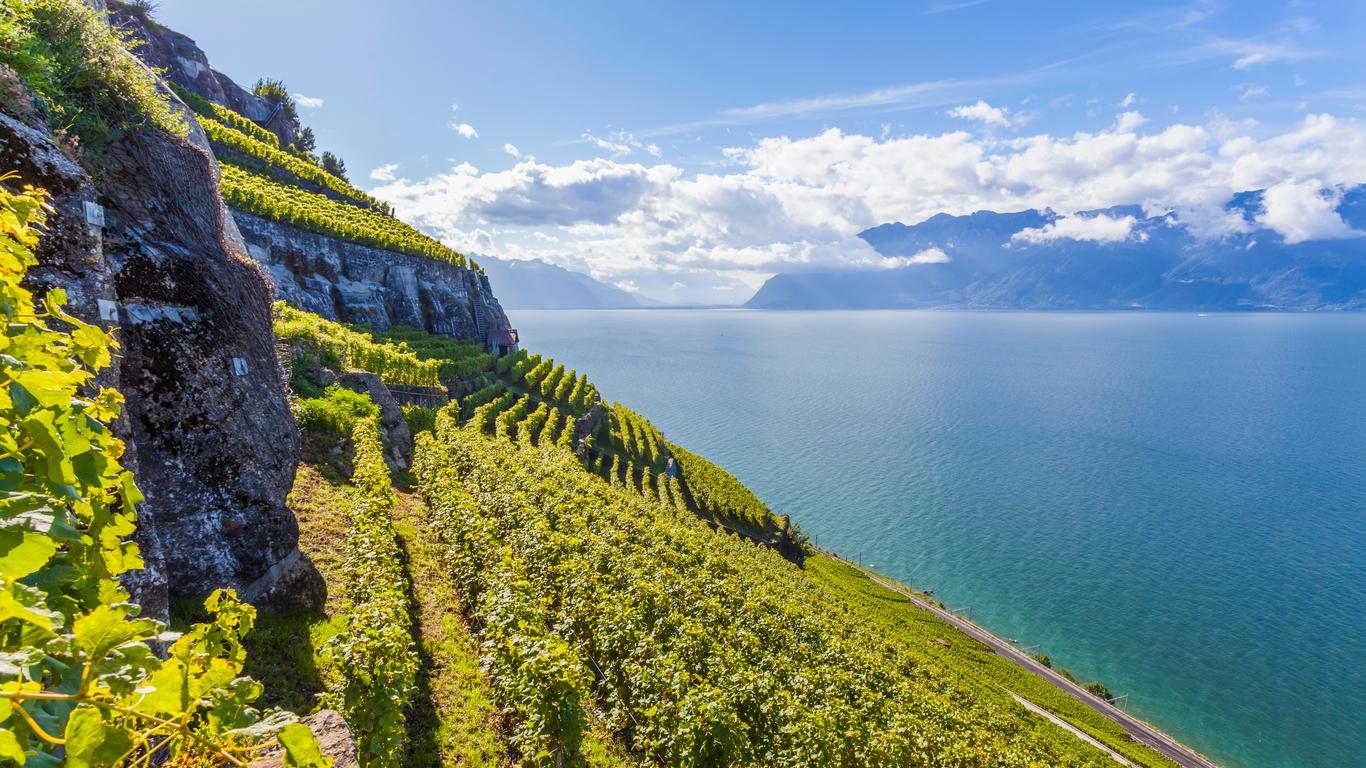The World Heritage vineyards of Lavaux are draped along the Swiss shores of Lake Geneva, between Lausanne and Montreux. Backdropped by the rugged peaks of the Alps, they benefit from the cooling breeze coming off the lake and the long days of uninterrupted sunshine. Lavaux looks unique in winter when skiers are slaloming down snowy slopes next to the vineyards. In summer it’s a classic scene of lush green colours and farmhouses hidden amongst the vines.
Dry and fruity Chasselas grapes originate here and provide the majority of Lavaux’s production. Easy-drinking Gamay and Pinot Noir are the main red cultivars, and a number of vineyards create Swiss-style red blends.These are closer in style to Italian rather than French blends, with soft, subtle flavours that are perfect for a summer day. The rows of vines stretch for 30 kilometres along the lakeshore and centre on the city of Vevey. A series of six villages can be visited, and each has cellars which offer tastings.
Some of the Lavaux hillside vineyards are open to the public where visitors can sample different vintages in charming stone cottages. Along the lakeshore, there are a number of larger vineyards, which offer more choice of what to taste. Six different villages are part of the wine trail, and connoisseurs will notice slight variations in the wine. A local train line connects these villages, and there’s a popular walking route from Montreux to Lausanne. The entire walk takes nine tours without stops for tasting, so most people walk part way before taking the train back to the city. It’s also possible to head out on a bicycle tour.
The wine terraces date back to the 11th century and the time of Benedictine and Cistercian monasteries. It’s believed to be one of the oldest continually growing wine regions in the world and was made a UNESCO World Heritage site in 2007.





